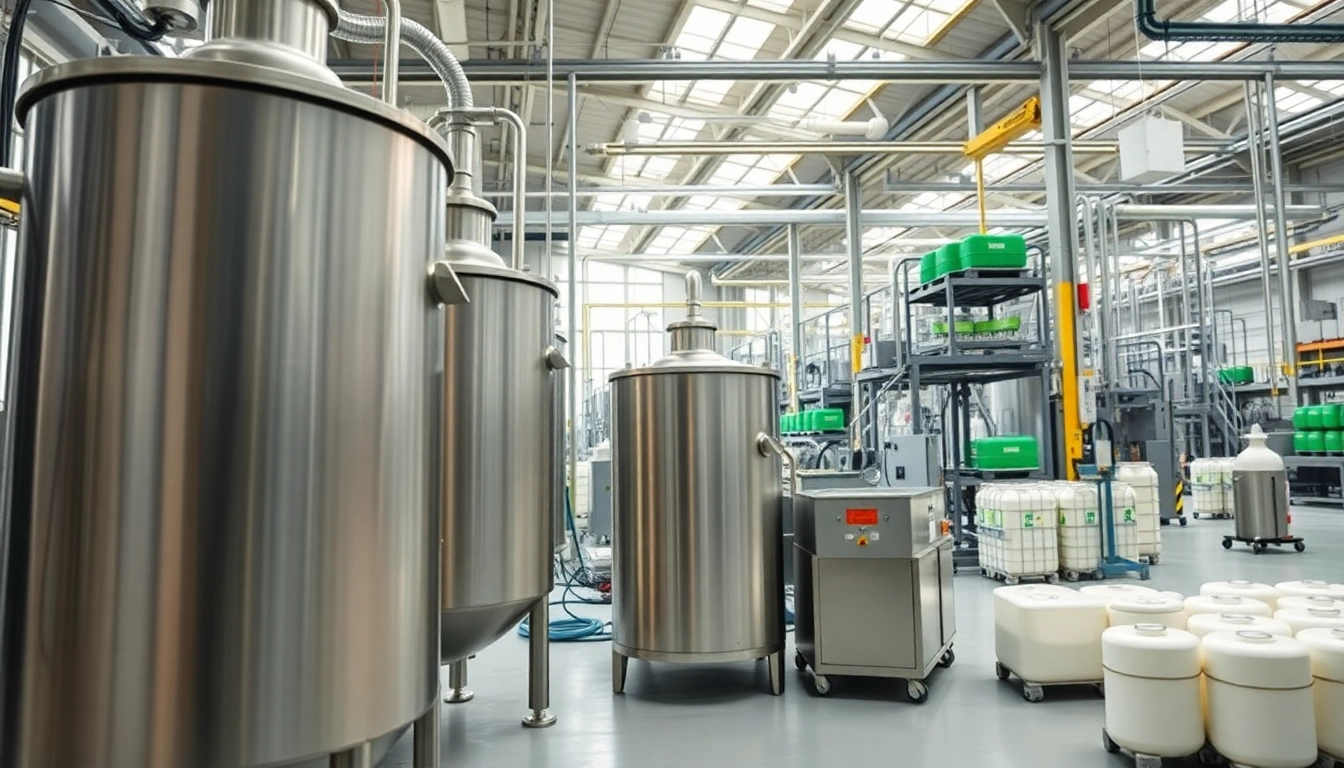Understanding Cellulose Ethers and Their Applications
What Are Cellulose Ethers?
Cellulose ethers are derivatives of cellulose, a natural polymer that serves as a fundamental structural component in the cell walls of plants. By treating cellulose with various chemical reagents, manufacturers can synthesize cellulose ethers that offer unique functionalities. These compounds are characterized by their ether linkages, resulting in modified water solubility and other enhanced properties which make them invaluable in numerous applications. Cellulose ethers are used not only in food and pharmaceuticals but also in construction, personal care, and industrial processes.
Key Applications Across Various Industries
Cellulose ethers find widespread use across multiple sectors due to their versatile properties:
- Food Industry: As thickening and gelling agents, cellulose ethers improve the texture and stability of food products, such as sauces and dressings. They also serve as emulsifiers, stabilizers, and fat replacers.
- Pharmaceuticals: In the pharma sector, cellulose ethers are utilized as binders in tablets and in the formulation of controlled-release drugs, ensuring a consistent release of active ingredients.
- Construction: Cellulose ethers such as hydroxypropyl methylcellulose (HPMC) are vital in cement and mortar applications, enhancing moisture retention and workability.
- Personal Care: These ethers act as thickeners and film-formers in cosmetics, ensuring products apply smoothly and maintain stability.
- Industrial Applications: In paints, coatings, and adhesives, cellulose ethers serve as rheology modifiers, improving consistency and performance.
Advantages of Using Cellulose Ethers
The advantages of cellulose ethers are prominent, making them a sought-after ingredient in various applications:
- Versatility: They can be customized to meet specific functional requirements, providing flexibility across different industries.
- Non-Toxicity: Being derived from natural cellulose, they are generally recognized as safe (GRAS) for food applications.
- Improved Texture and Stability: Cellulose ethers enhance the mouthfeel and shelf-life of products through their stabilizing properties.
- Water Retention: They possess excellent water retention capabilities, making them advantageous in pharmaceutical and construction applications.
- Compatibility: Cellulose ethers can easily blend with other materials, enhancing the overall properties of products.
Manufacturing Processes of Cellulose Ethers
Step-by-Step Overview of Manufacturing
The manufacturing of cellulose ethers typically involves a multi-step chemical process:
- Preparation of Cellulose: Natural cellulose is sourced from wood, cotton, or other plant materials and is purified.
- Alkalization: The purified cellulose is treated with an alkaline solution to activate the hydroxyl groups.
- Esterification: The alkali-treated cellulose is then reacted with etherifying agents to form the cellulose ether. The choice of etherifying agent will dictate the properties of the final product.
- Purification and Drying: After the reaction, the product is purified to remove unreacted chemicals, followed by drying to obtain the desired form (powder or granulates).
Key Technologies in Production
Several advanced technologies are employed in the production of cellulose ethers:
- Continuous Process Technology: This method allows for a steady production of cellulose ethers, improving efficiency and consistency in quality.
- Automation and Control Systems: Modern manufacturing utilizes advanced automation systems to control reaction parameters precisely, ensuring high-quality output.
- Green Chemistry Approaches: To minimize environmental impact, manufacturers may use eco-friendly solvents and reagents in the production process.
Quality Control Measures
Quality control is a critical aspect in the manufacturing of cellulose ethers to ensure product consistency and compliance with standards:
- Raw Material Inspection: Quality checks on raw cellulose and reagents ensure that the best materials are used for production.
- In-Process Monitoring: Regular monitoring of parameters such as temperature, pH, and viscosity during manufacturing helps maintain product integrity.
- Final Product Testing: Comprehensive testing of finished cellulose ether for purity, molecular weight, and functional properties is essential before it reaches the market.
Market Trends and Demand for Cellulose Ethers
Current Market Landscape
The market for cellulose ethers has shown robust growth due to rising demand from various sectors, especially the pharmaceuticals and food industries. Factors such as increasing health awareness and the demand for clean-label products are influencing this upward trend. The global cellulose ether market is marked by a diverse range of end-user applications, from food products to advanced construction materials.
Future Growth Projections
Analysts predict continued expansion of the cellulose ether market, driven by the increasing versatility of applications and ongoing research and development efforts. Added growth opportunities are expected in emerging economies where industrialization is on the rise.
Factors Influencing Demand
Several factors contribute to the demand for cellulose ethers, including:
- Health and Wellness Trends: The shift towards healthier food options is increasing the use of cellulose ethers as low-calorie thickeners and stabilizers.
- Regulatory Support: Government regulations promoting natural and environmentally friendly products further enhance the market for cellulose ethers.
- Technological Advancements: Innovations in cellulose ether formulations tailored for specific applications encourage diverse uses across industries.
Choosing a Reliable Cellulose Ether Manufacturer
Criteria for Selection
When selecting a Cellulose ether manufacturer, several factors come into play:
- Reputation: Opt for manufacturers with a proven track record in quality and customer satisfaction within the industry.
- Technological Capability: Ensure that the manufacturer utilizes modern production techniques and technologies that guarantee efficient and high-quality output.
- Customization Options: The ability to customize formulations based on specific customer needs is an essential consideration.
Evaluating Quality Assurance Standards
A stringent quality assurance system is critical when choosing a cellulose ether manufacturer:
- Certifications: Check for ISO or other relevant certifications that demonstrate commitment to quality management and environmental standards.
- Testing Protocols: Investigate the manufacturer’s testing protocols to ensure that their products meet regulatory and safety standards.
Importance of Customer Support and Service
A reliable cellulose ether manufacturer should also provide comprehensive customer support:
- Technical Assistance: Support in formulation development and product application can significantly enhance product effectiveness.
- Logistics and Delivery: Efficient logistics and timely delivery are essential to ensure smooth operation for businesses relying on these materials.
Environmental Considerations in Cellulose Ether Manufacturing
Sustainable Practices in Production
Sustainability is increasingly important in cellulose ether manufacturing, and leading manufacturers are adopting eco-friendly practices:
- Utilization of Renewable Resources: Sourcing raw materials from renewable sources reduces dependence on finite resources and supports sustainability.
- Waste Reduction Initiatives: Implementing waste management systems and recycling processes minimizes environmental impact during production.
Impact on the Environment
While cellulose ethers are environmentally benign compared to synthetic alternatives, their production can still have an environmental impact if not managed properly. Manufacturers are encouraged to adopt life-cycle assessment strategies to understand and mitigate their environmental footprint.
Compliance with Regulatory Standards
Compliance with environmental regulations is crucial for cellulose ether manufacturers. Adhering to guidelines ensures that production processes are sustainable and that the final products are safe for both consumers and the environment.








